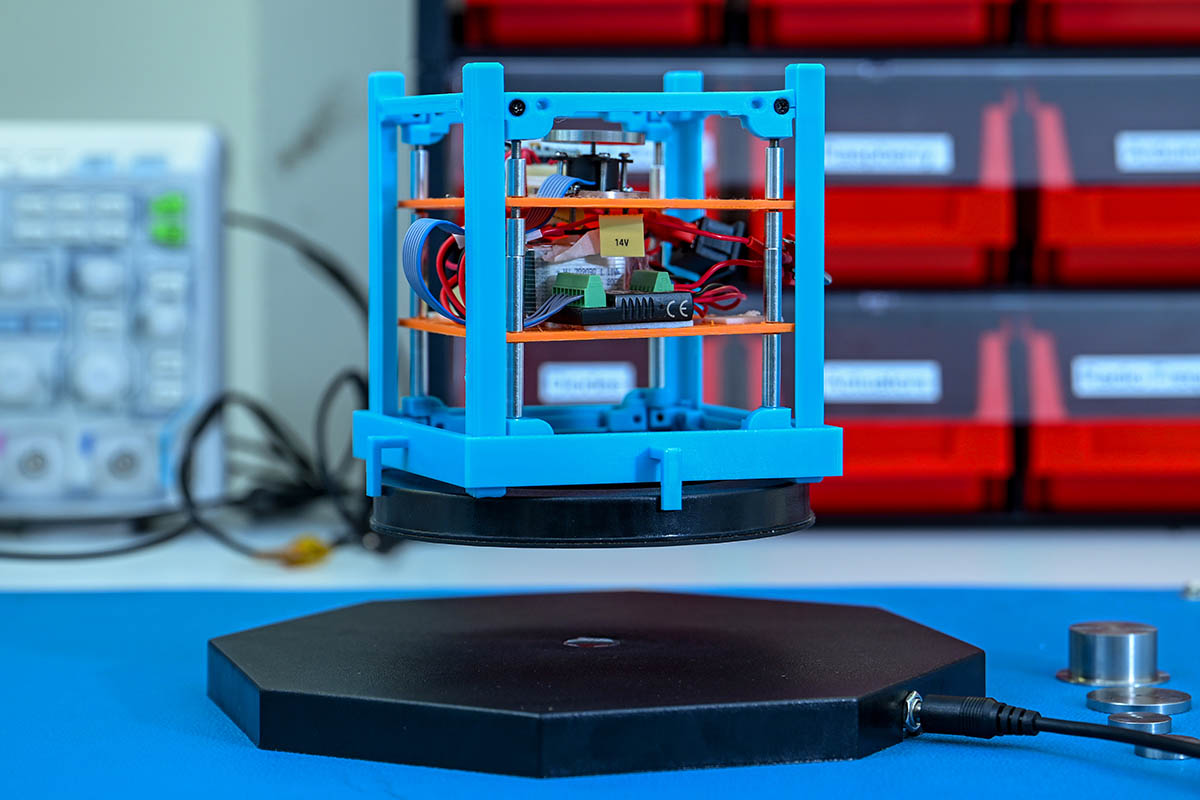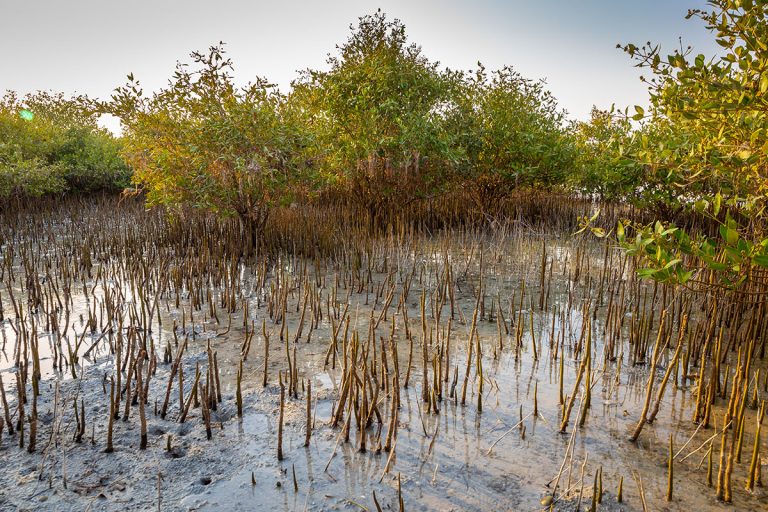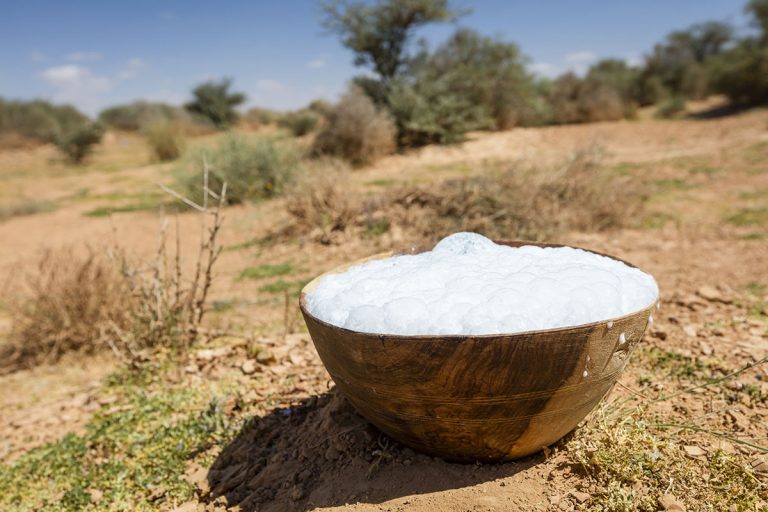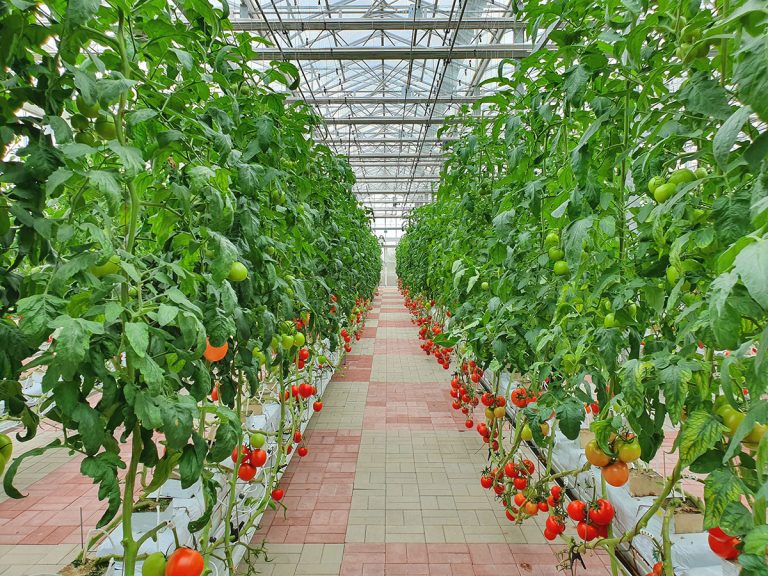An Arabian space odyssey
The Space Technology and Innovation Lab is propelling Khalifa University to the forefront of space exploration, one CubeSat at a time.
In the heart of the United Arab Emirates, a team of visionary researchers is pushing the boundaries of space technology and innovation. Khalifa University’s Space Technology and Innovation Lab (KUSTIL), led by former NASA scientist Professor Sean Swei, is spearheading projects that promise to revolutionize space exploration. From conquering the removal of space debris to taking previously earth-based activities, such as pharmaceutical research, into space, KUSTIL is tackling some of the most pressing challenges in space science with ingenuity and determination.
Cleaning up our cosmic backyard
A critical issue facing the space industry today is the proliferation of orbital debris. Since the 1950s, humanity’s ventures into space have left a trail of defunct satellites, spent rocket stages and countless fragments cluttering low Earth orbit (LEO). Dr. Swei and his team are taking an innovative approach to this monumental challenge.
“If not addressed, LEO may become unusable in 30 years,” Swei warns. “We aim to initiate impactful cleaning efforts using smaller satellites to minimize launch costs.”
At the forefront of this effort is research engineer Afnan Elmubasher, whose research focuses on developing cutting-edge debris removal technologies. The team’s novel approach involves using CubeSats, small, modular satellites equipped with laser ablation systems to remove space debris.
“We propose a laser ablation propulsion system that uses the debris itself as propellant,” Elmubasher explains. “This method allows a small 16U CubeSat to remove a large number of debris within the recommended 25-year period.”
“Our mission at KU is to build our capability and develop technological self-reliance. We aim to build up our students and researchers, and therefore develop our in-house capability in space research.
Sean Swei
What sets KUSTIL’s approach apart is its efficiency and cost-effectiveness. While conventional debris removal systems require kilowatts of power, the team has developed a system that can operate with as little as 64 watts. This breakthrough could make large-scale debris removal missions financially viable for the first time.
The team is also working on innovative capture mechanisms, including miniaturized tentacles that can be folded into a CubeSat yet are durable enough to grasp and hold debris. This holistic approach to debris removal showcases KUSTIL’s commitment to developing practical, implementable solutions to complex space challenges.
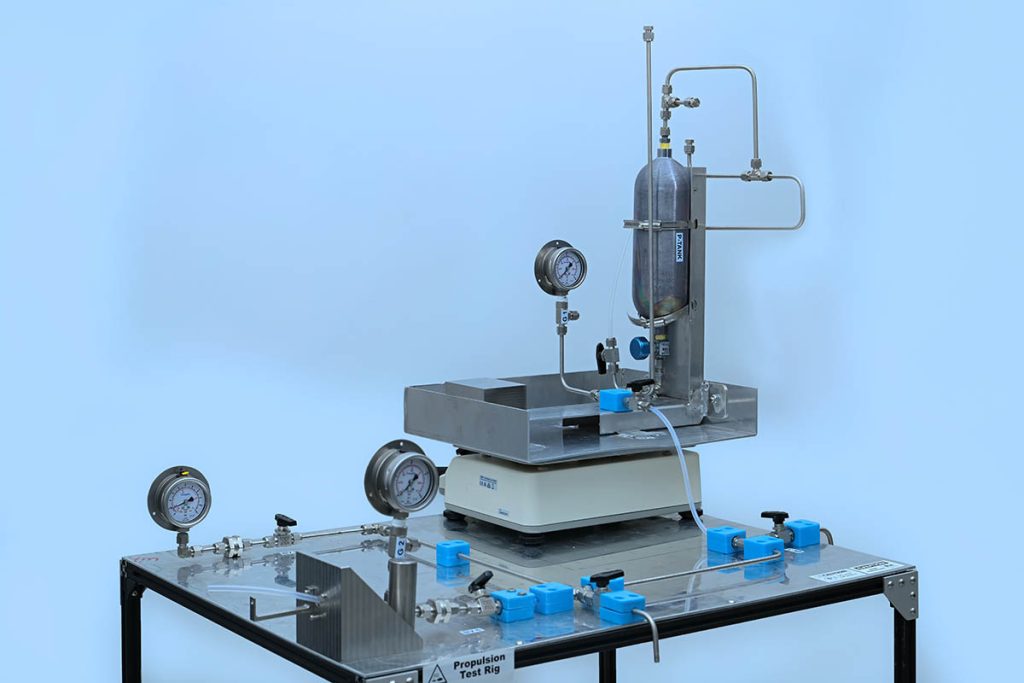
Propelling the future of space exploration
The lab is also at the forefront of developing next-generation propulsion systems for small satellites. Fatima Al Hammadi, an aerospace engineer and a research assistant, is leading the charge in developing green propulsion systems for CubeSats.
“We’re using high-concentration hydrogen peroxide as a propellant due to its eco-friendly properties,” Al Hammadi explains. “It breaks down into water vapor and oxygen when fired, minimizing environmental impact.”
The shift towards hydrogen peroxide as a propellant reflects KUSTIL’s commitment to sustainable space exploration. Traditional propellants such as hydrazine, while potent, are known for their toxicity, corrosiveness, and potential for groundwater contamination. Mishandling can lead to explosions and pollution at launch sites. In contrast, hydrogen peroxide offers a safer alternative with zero toxicity and emissions during combustion.
“Only 3% of human proteins have been structurally solved to date. Understanding protein structures is vital for comprehending their physiological pathways and contributions to our bodies.”
Salma Sultana Syed
In parallel, KUSTIL is collaborating with the Technology Innovation Institute in Abu Dhabi on space mission design using microelectronic propulsion systems, including plasma thrusters. These advanced propulsion technologies are crucial for the precise maneuvering required in future space missions.
Revolutionizing space materials
Imagine a material much stronger, and yet much lighter, than aluminum. This is one of the most exciting areas of research at KUSTIL, entailing the development of advanced materials for space applications.
Assistant professor Yarjan Abdul Samad is leading efforts to harness the power of 2D materials such as graphene to create lightweight, high-performance components for satellites and space structures.
One of Abdul Samad’s most innovative projects involves infusing wood with graphene to create a sustainable, high-performance material for satellite structures. “We open the cells of wood and introduce graphene to make it electrically conductive, radiation-shielding, and mechanically stronger,” he explains.
This graphene-infused wood not only matches the performance of state-of-the-art materials such as aluminum alloys but also addresses the critical issue of space debris. Unlike traditional satellite materials that can leave toxic remnants upon re-entry, this eco-friendly alternative burns up cleanly, minimizing environmental impact.
The team is also exploring the use of 2D materials in laser propulsion, and developing composite materials for lunar surface applications. These groundbreaking materials could play a crucial role in future lunar missions and long-term space habitation.
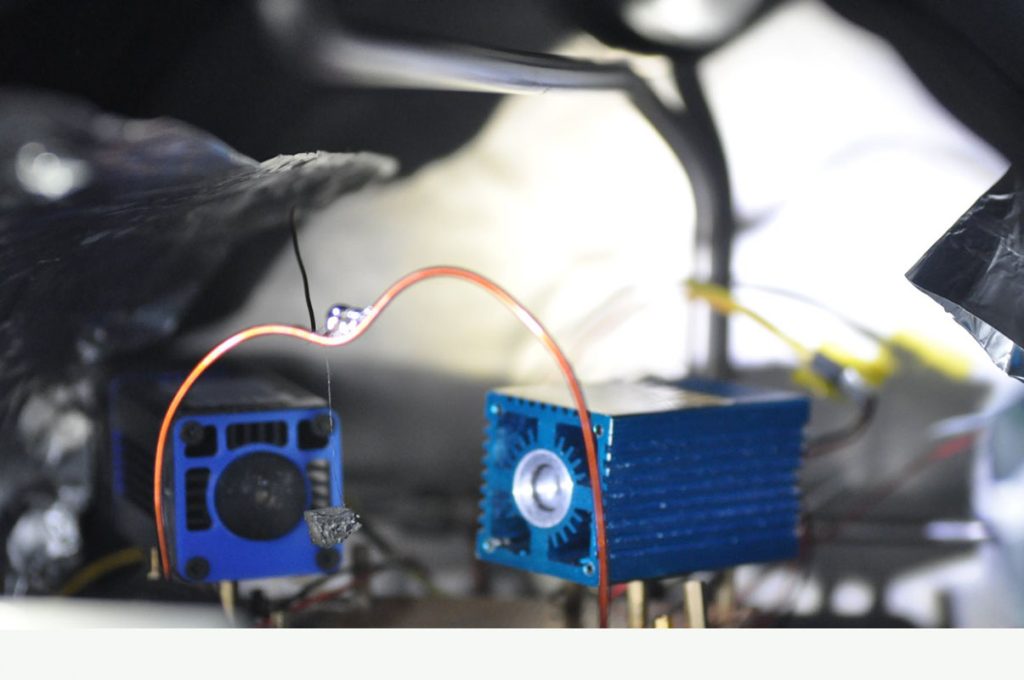
Unlocking the secrets of proteins in space
While much of KUSTIL’s work focuses on the technological aspects of space exploration, the lab is also making significant strides in space-based scientific research. Salma Sultana Syed, a research engineer working under the leadership of Dr David Sheehan, is finding ways to leverage the unique microgravity environment of space for protein crystallization experiments, a vital process for understanding protein structure and function, with potential applications in drug discovery and other industries.
“Only 3% of human proteins have been structurally solved to date,” Syed explains. “Understanding protein structures is vital for comprehending their physiological pathways and contributions to our bodies.”
Sheehan’s team has developed crystal screens to increase the chances of successful protein crystallization, a breakthrough that could accelerate our understanding of critical proteins. The work has been recognized internationally and the team has been selected to send protein samples to the International Space Station for crystallization experiments.
The team is also pioneering the use of nanoparticles in protein crystallization. Their ability to synthesize stable nanoparticles of gold, silver, and platinum in just two minutes opens up new possibilities for protein research both on Earth and in space.
Looking to the future, Syed said the team is planning to launch protein samples on CubeSats, eliminating the need for human intervention and potentially revolutionizing space-based protein research. They’re also exploring the use of nano flowers for protein crystallization, a novel approach that could yield significant breakthroughs in structural biology.
A holistic approach to space innovation
KUSTIL brings together experts in fields ranging from materials science and propulsion technology to astrobiology and protein crystallography. This diverse team allows the lab to tackle complex, multifaceted challenges in space exploration.
“We have a unique opportunity here,” Dr. Swei emphasizes. “The science team and technology team are co-located, which is an excellent setup. Much of our mission’s success depends on the proximity between the two.”
This integration of science and technology is evident in the lab’s plans to host its own science payloads on the CubeSats the researchers are developing. By bringing together cutting-edge engineering and groundbreaking scientific research, KUSTIL has built a world-class research ecosystem that continues to expand.
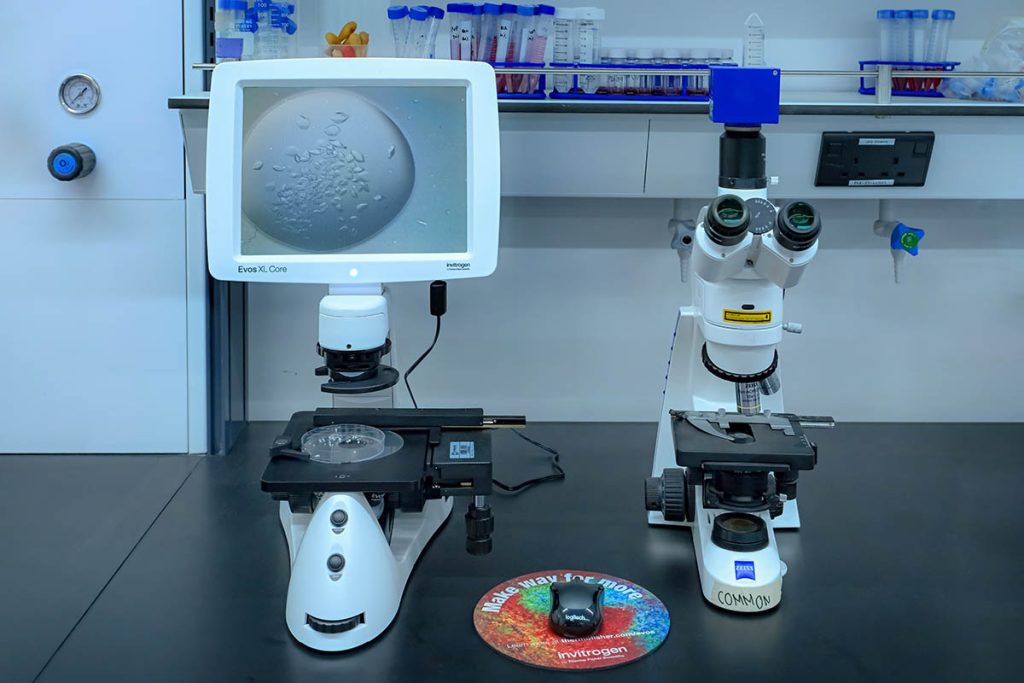
Inspiring the next generation
Operating from an expansive 1,800-square-meter facility, KUSTIL has established itself as a formidable space research center. The lab houses state-of-the-art facilities including high-grade clean laboratories for sensitive optical work, advanced communication systems for tracking satellites, testing chambers that simulate space conditions, and specialized equipment for testing spacecraft components.
In addition, the lab brings together a robust team of 10 faculty members and 22 researchers, including graduate students and subject matter experts, working in close collaboration with prestigious institutions worldwide.
“Our mission at KU is to build our capability and develop technological self-reliance,” Dr. Swei explains. Through strategic partnerships with key national stakeholders including the UAE Space Agency, Mohammed Bin Rashid Space Centre (MBRSC), and Technology Innovation Institute (TII), KUSTIL is actively contributing to the UAE’s space ambitions.
“We aim to build up our students and researchers, and therefore develop our in-house capability in space research,” he adds, highlighting the lab’s commitment to nurturing local expertise while maintaining strong international research connections with institutions across Europe, Asia, and North America.

